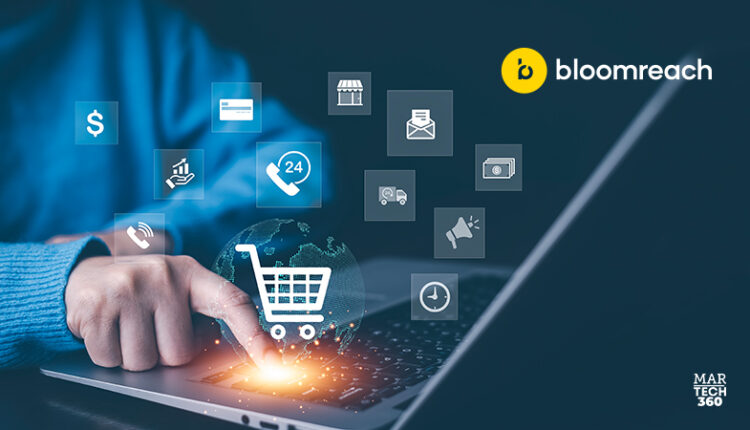The world of digital marketing, and personalization’s role within it, have changed rapidly in the past few years. That’s why, even though consumers now expect to engage with brands on a deeper level through personalized experiences, many brands still fall short.
As more touchpoints are introduced to the customer journey, it’s become harder and harder for marketers to create a personalized journey that not only works, but works everywhere — personalization that doesn’t end with an email or SMS, but instead spans across every channel in that customer’s journey.
While difficult, though, seamless personalization across channels is possible. Let’s explore how marketers can take full advantage of omnichannel marketing to create the truly personalized experiences that customers expect.
Starting With Data
No marketer needs to be told about the power of data, but it bears repeating that a strong core of the right data is critical to your personalization efforts. Ensure you capture real-time customer data, and that you’re empowered to easily use that data within your campaigns (without having to depend on IT or data scientists).
Product data should also be a priority for marketers. Personalization isn’t just about knowing your customers, it’s about knowing your customer in the context of what you sell. The seamless experience falls apart if, for example, a customer receives a targeted ad for an out-of-stock product. With robust product data complementing your customer data, you create personalized experiences that reflect both what your customer wants and what your business has to offer them at that precise moment.
Using AI Effectively
Artificial intelligence has emerged as a game-changer for marketers, offering limitless opportunities for personalization and customer engagement. By harnessing the power of AI, marketers can use the vast amounts of data they’ve collected to personalize campaigns, at scale, using customer preferences, behaviors, and intent.
Take personalized product recommendations, for example. By analyzing past purchase history, browsing behavior, and demographic data, AI algorithms can generate tailored product recommendations that integrate into marketers’ campaigns and resonate with each customer’s unique preferences.
An important consideration when utilizing AI for marketing personalization — whether in product recommendations or elsewhere — is how it connects across channels. As I mentioned earlier, marketers don’t simply need to make personalization work, they need to make it work everywhere if they truly want to meet customer expectations.
A common core of data and AI powering your disparate channels can ensure a seamless, cross-channel connection. That would mean the algorithms powering personalized product recommendations in your emails, for example, would be trained by the same data that’s personalizing product recommendations on your website. This results in a customer journey that’s more consistent and, ultimately, far more enjoyable.
Also Read: How to Leverage TikTok as a B2B Tool
Activating On-Site Personalization
Gone are the days when a generic website experience is enough to meet the demands of consumers. Now, when customers land on your site, they expect a seamless continuation of the personalized journey initiated by targeted emails, SMS, or ads.
This disconnect is a common pitfall in many omnichannel campaigns. Marketers often excel in crafting personalized messages but falter when it comes to translating that personalization onto the website. Imagine receiving a personalized email offering a discount on a product, only to visit the website and struggle to find the promoted item.
By implementing on-site personalization tools, such as dynamic content modules or targeted weblayers (aka on-site banners), marketers can ensure that the website experience aligns seamlessly with other marketing channels. Make sure your tool also allows for real-time data analysis, so you can implement personalized recommendations, promotions, and messaging tailored to each visitor’s preferences and behavior. This continuity and connectivity in the customer journey enhances engagement, builds trust, and ultimately drives conversions.
Connecting to Offline Experiences
In today’s omnichannel landscape, the lines between online and offline experiences are increasingly blurred. Marketers have an opportunity to capitalize on this convergence by integrating digital and physical touchpoints to create a cohesive customer journey.
Imagine a customer browsing products online and receiving personalized recommendations based on their past purchases. Later, when they’re in the vicinity of a physical store, they receive a targeted SMS with an in-store discount code for the same items they viewed online. This seamless transition of personalization from online to offline enhances the overall shopping experience and strengthens the bond between the customer and the brand.
By using technologies such as QR codes, NFC tags, or geolocation data, marketers can bridge the gap between online and offline channels, delivering a consistent and personalized experience across all touchpoints. Whether it’s through targeted promotions, personalized recommendations, or interactive experiences, connecting offline experiences to the digital realm enriches the customer journey and improves brand loyalty.
Make Personalization a Priority
As e-commerce continues to evolve, embracing these strategies will be essential for staying competitive and meeting the needs and expectations of today’s consumers. By prioritizing personalization that connects across touchpoints, marketers can build stronger connections with their audience, foster brand loyalty, and drive sustainable business success in the digital age.


Comments are closed.